Shortly after the stamped-receiver AKM rifles went into mass production, Mikhail Kalashnikov and his bureau of technicians and engineers produced what is arguably best general-purpose machine gun in use today. It was adopted into service in 1961 after a surprising upset of a GPMG design by Nikitin. Mechanically, the PK is basically an AK action flipped upside down, to allow for a belt feed on the top of the receiver instead of a box magazine on the bottom.
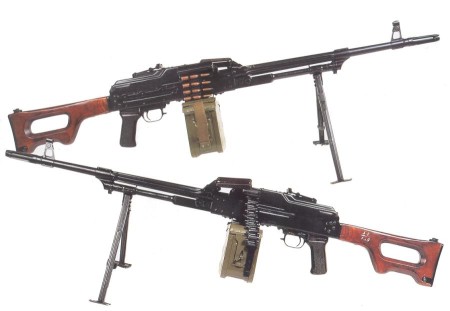
Like the AK, the PK makes clever and effective use of design elements from several other guns. The mechanism for pulling cartridges out of the belt is taken from the Goryunov SG43, the design of the feed pawl (which is directly powered by the gas piston upon firing) comes from the Czech vz52 LMG, and the barrel quick-change mechanism also comes from the Goryunov. The rotating bolt and gas piston design are form the AK, with the addition of a manually adjustable gas cylinder.
Copying the German doctrine of the universal machine gun, the PK was adopted simultaneously in several different configurations – the regular PK with its integral bipod for infantry use, the PKS mounted on a lightweight tripod for emplacements and better supporting fire, the PKB with spade grips and mountings for armored vehicle use, and the PKT for coaxial tank use, with a remote firing solenoid trigger in place of the stock and pistol grip.
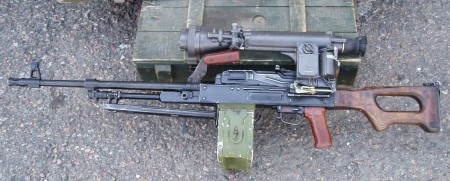
The PK design is an excellent one, and very reliable. It makes very good use of stampings, which the Russians had spent nearly 15 years perfecting for the AK rifle. It is interesting to compare the PK to the US contemporary M60 design, which is a technically quite poor design. On paper the two guns share many common features (long gas piston, stamped receiver, rotating bolt, etc), but the PK was based on a gun completely understood by its designer (the AK), while the M60 was developed from the German MG42 and FG42 by a team that really didn’t understand the subtleties of its parent designs.
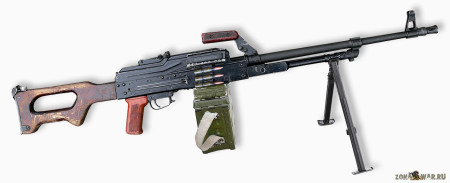
In 1969, the design was revised and given the new designation PKM (modernized), along with the PKMS and PKMT. The new version was lightened to 16.5 pounds (down from 19.8), and can be distinguished by a short flash hider, smooth barrel, and ribbed top cover (the original PK has a half fluted barrel, smooth top cover, and long flash hider). Both versions continue to use the antiquated-but-effective 7.62x54R cartridge and metal belts compatible with the Maxim and Goryunov machine guns. The PK and PKM have been adopted and manufactured by many different countries, including pretty much the entire Soviet Bloc.
Sources for Parts
Apex Gun Parts sells PKT parts kits, as well as most components, plus belt loaders and tripods for the PKMS.
Allegheny Arsenal also has a variety of PK/PKM parts, plus print manuals and non-firing PK dummy guns.
Videos
High speed footage of a PKM:
Manuals
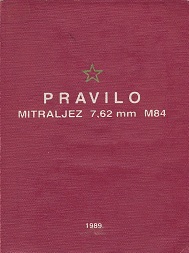
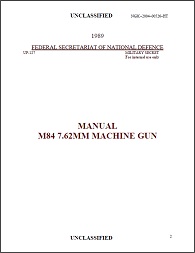
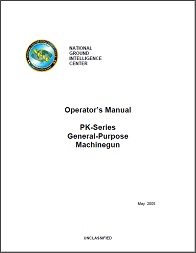
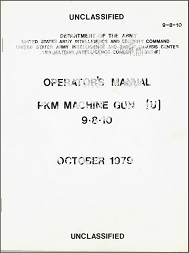

Though unexpected, Im glad to see youve taken some interest in this gun. I can say from personal experience, I have never fielded any weapon Ive felt more confidence in than the PKM. During my Finnish conscription, I saw even the Rk62 and 95 have a jam or two, but in one year of service, not once with the PKM. And at the same time, ive never seen any weapon tolerating such abuse as the PKM.
Once, when coming ashore from a landing craft, I was using 200rds belts without cans or pouches with the PKM. They tangeled to everything, seagrass, roots, water and sand – pulling all of this into the gun as I fired. I was sure it would give up soon or later but no – it pulled everyting into the reciever and when inside, the mechanism chopped everything up into convienient litte pieces and threw (most of it) out together with the spent brass.
Since then, I have mostly been usin the FN MAG. The MAG, often dubbed the best machinegun in the world, though maybe not bad, still has nothing to bring to the table beating the PKM. Any day, I would switch back, not thinking twice about it.
Some of our more astute machine gunners in Iraq envied the Iraqi Army’s PKM guns. To a light infantry grunt, the light weight outweighs almost everything. The M-240B is an awesome gun, but it is very heavy (after body armor.) As a PL, I had to keep an eye out for the MG teams in terms of heat exhaustion. With something like the PKM, we could have even replaced the M-249…It would be awesome if Uncle Sam purchased some of the Polish PKM’s in 7.62 NATO. One could only dream…
Bulgaria makes a better version in 7.62 Nato.
As a retired Marine, I spent two decades angry with the total pos the M-16 was, improved slightly as the A-2, and left it all behind as the M-4. I knew that Marines and special ops used the rpd in Vietnam, early, and knew it was the best belt fed weapon in the war. They also knew the M-43 round, the 7.62 by 39 was substantially superior to our own light round, and did nothing about it.
I’ve worked on every kind of “gun” the Marine Corps used in my day, and while the 240G and the M-249 are vast improvements over substantially inferior weapons, they truly don’t hold a candle to either of their contemporary “opposition”.
From my first encounter with the M-16,in April of 76, to the last time I held an M-60, noting its plastic horse shit, I’ve know if my weapon failed in combat, I would pick up an enemy weapon, knowing they were substantially superior in every way.
As a tool and die maker, a machinist, and weapons designer, I know we had a plan to field weapons of similar manufacture, but it was derailed by congress awarding contracts to friends, and not allowing the Military to establish its own standards.
The Germans never were afraid to take a foreign design if it worked better. The Russians held similar views, and if it were a problem, they simply claimed the design as their own. We alone will refuse a good weapon in favor of a worthless pile, because it’s designed by someone with connections.
We are two generations of weapons behind the Russians, and yet we can be on par tomorrow, if we simply accept the truth, dump our bad choices, and choose the best there is, including he caliber and cartridge.
What is seldom spoken of is the enormous advantage the rim of the 54r round, as ensuring a well functioning impossible to stop belt fed machine gun. The rim is what makes it a positive extracting round, and also ensures the empty case is well loosened before extraction, in the action it is set in. There is a substantial advantage in a recessed primer, giving an open bolt firing weapon some fifty to sixty thousandths of pressure on the firing pin, the recess and the depth of the firing pin detent, ending the stationary inertia of the bolt carrier, and starting the carrier on its path of extraction as the powder is ignited, meaning the weapon needs no “accelerator”, nor any muzzle bushing, to maintain a good rate of fire that doesn’t change appreciably with firing.
Semper Fidelis,
John McClain
GySgt, USMC, ret.
I don’t know what any of your post means.
)))))
You are right, dear Rich.
I’m from Russia and i agree with you. I think John McClain is schizophasiaс.
The man (Gunny John McClain) knows what he is talking about!, I know because I am a gunsmith, your making fun of him only shows your ignorance.
I have used all 3 weapons mentioned above the M60, M240, and PK/M and have found the reliability of the 240 and PK to be on par but have to agree that the 240 is quite heavy although a fine weapon that weight could mean the difference between fast relocation or being over ran from lack of speed. The PK will fodder any of the known 7.62x54R ammo out there whether dirty lightly rusted or sandy, whereas the 240 and 60 would find this problematic and would either not function at all or jam left and right. Also the M60 had 23 parts that could be put in wrong and with the exception of the sear it would fuction test as if everything was right. I think we need some new American arms inventors on par with Mr.J.M.Browning to come up with a light weight GPM for the American troops or adopt a weapon thats up to the standards of needs of them. The Pk or the German MG1 both are simple light weight and very effective.
I will note that the M-240 is the Browning BAR, turned upside down, with a belt feed.
I was going to say quite a few things about the PK and PKM, but the other guys have pretty much said it all. Overall, the PKM definitely is the best 7.62mm GPMG in current service, bar none.
Kevin O’Brien ( Weaponsman ) has in the past agreed with John McClain’s assessment of the RPD based on his own experiences while serving in Afghanistan.
It’s funny how so many people perceive the 7.62mm x 54R cartridge as antiquated ( but still as effective, if not more so, than its modern immediate Western rivals ), yet don’t think of the 30-06 cartridge as anything but modern even though it was introduced way back in 1906, only fifteen years after the 7.62mm x 54R. I’m guessing a lot of it simply has to do with perceptions. This is just an observation, not a criticism.
Little known fact:
In 1974, when the US was looking to replace the problematic M79/M219 for an armored vehicle application machine gun, they tested the PKT in 7.62x54R along with the 7.62mm NATO M219, M60E2, MAG-58, L8A1, AA-52 and a modified M1919 (specifically, the Canadian C1). It ranked very highly in the tests. However, it was felt that redesigning the PKM to fire the rimless 7.62mm NATO cartridge with the M13 links would be a long and drawn-out process, and may not have resulted in a better weapon that the MAG-58 (which became the M240 in 1977).
Since, the M240 gained its reputation in the US as a reliable MG in the armor application, which would eventually lead to its adoption as the replacement for the M60, had a modified PKT been designed and adopted as the new coaxial MG for the M60 (and later M1 and Bradley IFVs), it is conceivable that the PK could have been adopted as the standard US GPMG.
Food for thought.
Good call. Whoever it was who drew the conclusion that it would be too hard to re-chamber the PKM or PKT for the rimless 7.62mm x 51 NATO cartridge was plainly wrong, as the Poles have proven with their version of the PKM chambered in that very caliber per NATO integration. I suspect that the supposedly difficult re-chambering issue was merely an excuse, given the political and social climate of the time, to exercise the peripathetic and blatantly idiotic eternal “Not Made Here” syndrome that seems to bedevil so many armed forces across the globe to this day.
As for what you stated about the “M79/M219” in your first sentence, I think you meant to say “M73/ M219”, which would be correct for co-axial 7.62mm MG applications for that period in U.S. AFV applications.
Can you make a video about Russian’s heavy machine gun,likes Kord and NSV 12.7mm?
Does anyone know how you bore sight the PKM using the second smaller hole in the support plate?
Dear Sir/madam,
Am Mr.Aamanee Awatifi, the Business Developing Manager, Matloob Consulting & Marketing Global.
I will like to know if your company is interested to do Tender participation, in our beautiful Country(Islamic State of Qatar). We ‘ll appreciate receiving your products details and prices quoted in Ex-work basis.
Note that, we are not the buyer of your product(S). This is an on-going Tender and we are authorized business agent to the Government organization. Meanwhile, confirm back if your company’s Managing Director is interested to participate for the on-going Tender.
Best regard,
Aamanee Awatifi (BDM)
Matloob Consulting & Marketing Global.
Add: 21 Industrial layout, Aziziya Commercial complex,
PO.Box 31034,
I’ve read that the PKM belt is different from the PK belt, is that right ?